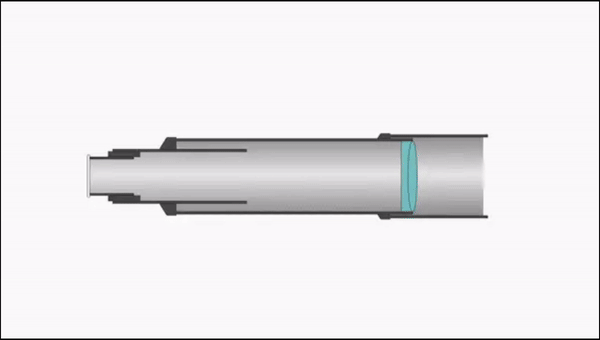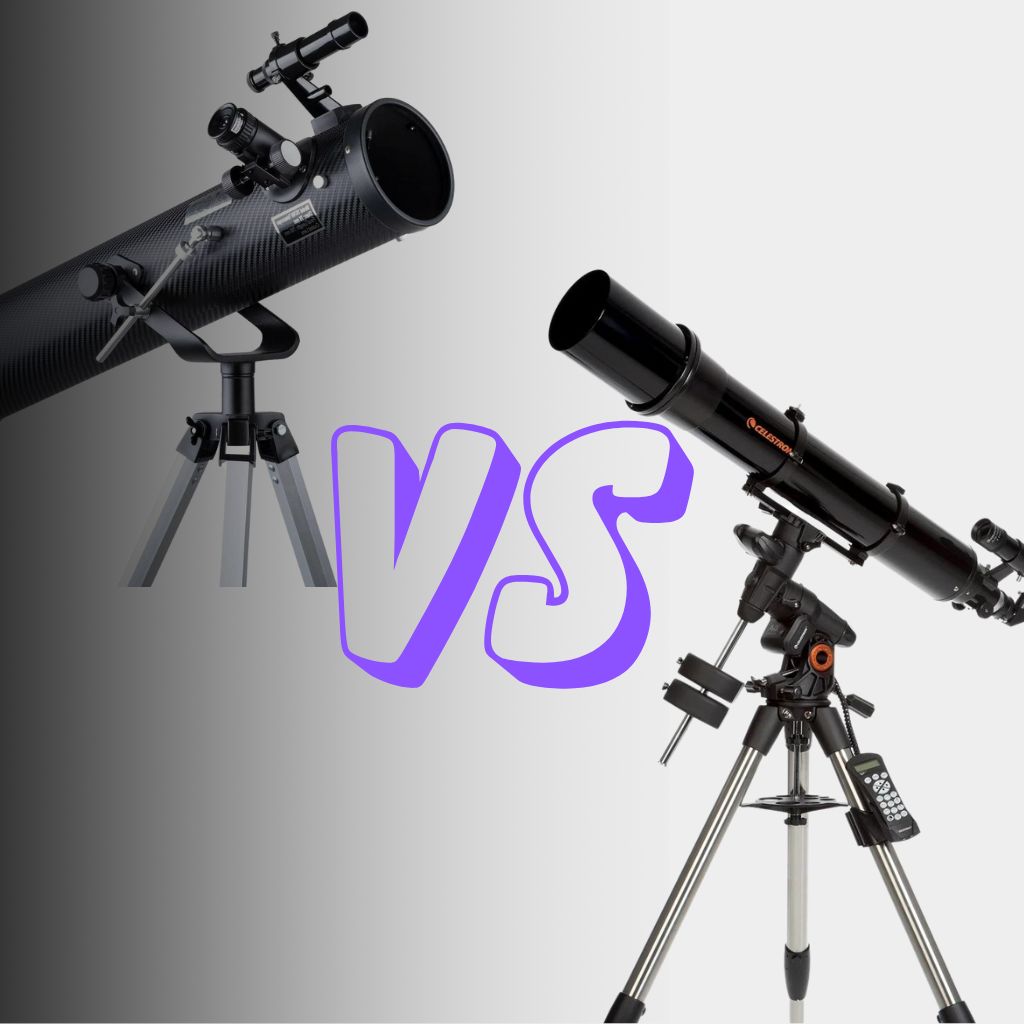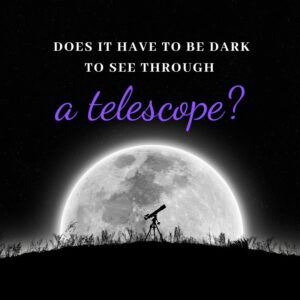This site contains affiliate links to products. I may receive a commission for purchases made through these links.
If you are looking to buy your first telescope, you will find out that there are a few types of telescope designs. The main telescope designs you can choose from are the refractor telescope and reflector telescope. This choice can significantly impact their astronomical journey, as each type of telescope offers distinct features, advantages, and limitations.
The main difference between refractive and reflective telescopes is that the refractor uses optical lenses, and the reflector telescope uses mirrors. Reflector and refractor telescopes also differ in the required maintenance. The refractor telescope requires less maintenance than a reflector telescope. Refractor telescopes usually have smaller apertures and are more expensive than reflector telescopes.
In this comprehensive article, we’ll explore their design principles, compare their performance in various observing conditions, and discuss their suitability for different types of celestial observation, but before we begin below are the key takeaways.
Key Takeaways
Refractor Telescopes
- Utilize specialized lenses for focusing light, ideal for deep space objects like galaxies and nebulae.
- Have two main lenses: the larger objective lens and the smaller eyepiece lens.
- Tend to be smaller in aperture and more portable but can become expensive with larger sizes.
- Suffer from chromatic aberration, with color fringing around edges, which can be mitigated by using apochromatic telescopes.
- Pros: Low image distortion, right-side-up images, no need for collimation, low maintenance, and beginner-friendly.
- Cons: Chromatic aberration, smaller apertures due to cost, less light collected, and expensive wider apertures.
Reflector Telescopes
- Use mirrors instead of lenses, offering more sensitivity across all wavelengths, suitable for larger and brighter celestial bodies like the Moon and planets.
- Generally cheaper than refractors as mirrors are less costly to produce.
- Are not prone to chromatic aberration and offer a larger aperture at a lower cost.
- Require collimation to maintain optical performance and their open design makes them susceptible to environmental conditions.
- Pros: Suitable for beginners, large aperture for deep-sky observations, no chromatic aberration, and capture significant amounts of light.
- Cons: Optical quality can be disappointing, require regular maintenance, and their large size can be cumbersome.
Reflector vs. Refractor Uses & Suitability
- Refractors are recommended for astrophotography and observing deep space objects, especially for beginners due to their ease of use and maintenance.
- Reflectors are better suited for observing brighter celestial bodies and offer more aperture for the price, making them ideal for visual observation.
- Reflectors are generally not recommended for beginners in deep sky astrophotography due to their maintenance needs.
Key Factors and Recommendations for Telescope Selection
- The choice between refractor and reflector telescopes should be based on the types of celestial objects you want to observe, your budget, and your willingness to perform maintenance.
- For beginners interested in deep-sky astrophotography, refractors are usually recommended.
- For general visual astronomy or observing bright celestial objects, reflectors offer a cost-effective solution with larger apertures.
What is a refractor telescope, and how does it work?


A refracting telescope, also known as a refractor, is a type of telescope that uses lenses to gather and focus light. It was the first type of telescope to be invented and has been used for centuries to observe celestial objects.
The basic design of a refractor consists of two lenses: an objective lens at the front of the telescope and an eyepiece at the back. The objective lens is a large lens that gathers and focuses light from distant objects. The light passes through the objective lens and forms an image at the focal point, which is located behind the lens.
The eyepiece is a smaller lens that magnifies the image formed by the objective lens. It is located at the back of the telescope and is used to view the image. The magnification of the telescope is determined by the ratio of the focal length of the objective lens to the focal length of the eyepiece.
Refractor telescope designs
Modern refractor telescopes have either the Kelerian design or the Galilean design.
Keplerian refracting telescope
The Keplerian Refracting telescope uses a convex lens at the front and a convex lens inside the eyepiece at the back of the telescope behind the primary lens’s focal point.
The light is refracted in the primary lens and produces a magnifying image in the eyepiece, called the “Refracting” telescope.
Because the eyepiece is situated behind the primary lens’s focal plane, the eyepiece’s image is inverted both vertically and horizontally. This design allows for a more apparent field of view in the eyepiece and a longer focal length telescope to achieve higher magnification.
Galilean refractor design
Galilean Refractor design uses a convex lens and concave lens in the eyepiece, but the eyepiece is placed before the focus point of the primary lens.
This design produces a true image that is not inverted. The Galilean Refractor design is more like a spying glass and is not used in modern refracting telescopes.
Advantages of the refractor telescope
- Refracting telescopes are easy to use and require little to no maintenance.
- They are usually small and compact.
- They are a good choice for kids to view deep-sky objects.
- Refractors with complex objective lens designs are the number one choice for astrophotography.
- Temperature change doesn’t affect the stargazing experience because of the closed tube design.
- A refracting telescope is an excellent choice for observing the moon and planets.
Refractor telescope disadvantages
- Refracting telescopes are available only with small apertures.
- Because of the small aperture, they can’t collect enough light to enjoy observing deep-sky objects like nebulae and galaxies.
- Refractor telescopes chromatic aberration – “color fringing” is a problem with the lenses where they can’t focus all colors to one point. A compound lens is usually needed to correct this issue, resulting in a higher price for the telescope.
- High-quality refractors with compound lenses are very expensive.
What is a reflector telescope, and how does it work?

The reflecting telescope is also called the Newtonian telescope because it uses the Newtonian design. This design uses mirrors to reflect light and produce an image. The only lens in the reflecting telescope is the eyepiece.
A reflecting telescope uses a spherical or parabolic primary mirror at the end of the telescope tube. The tube is open, and the light goes through and reflects from the primary parabolic mirror to a small flat secondary mirror at the front of the telescope.
The secondary mirror is tilted 45 degrees and reflects the light into the eyepiece on the side of the tube. Mirrors reflect the light to create an image in the eyepiece. That’s why it is called a reflecting telescope.
Advantages of the reflector telescope
- Reflecting telescopes are available in big apertures.
- The mirror is easier to manufacture than a lens, so they are cheaper than refractors.
- Big mirrors can collect a lot of light to enjoy every object in the night sky.
- Reflecting telescopes have no Chromatic Aberration.
- Even big observatory telescopes and space telescopes use mirrors.
- A reflecting telescope is the best telescope for the money.
Reflector telescope disadvantages
- A reflecting telescope needs more maintenance than a refracting telescope.
- Mirrors need to be aligned to get the best image. This is called collimation, and it needs to be done on every reflecting telescope from time to time.
- Because of the open tube design, the sudden temperature change can affect the image quality.
- Reflecting telescopes with big apertures take a lot of work to transport and store.
- Cometic aberration – the stars can be elongated around the edges of the field of view. The problem can be corrected by a coma corrector, adding to the price of a telescope.
Understanding Reflector Telescopes: Design Variations and User Tips
Reflector telescopes, known for their use of mirrors to collect and focus light, come in various designs. Each design caters to different needs and preferences. Understanding these can help you choose the right telescope for your astronomical journey.
Newtonian Reflectors
- Invented by Sir Isaac Newton in 1668.
- Utilizes a parabolic primary mirror to collect light and a flat secondary mirror to reflect the light into the eyepiece.
- Known for their simplicity and effectiveness in gathering light.
Ideal For:
- Beginners due to its straightforward design.
- Budget-conscious astronomers seeking a cost-effective option.
User Tips:
- Need regular check and adjustment mirror alignment (collimation) to ensure optimal image quality.
- Ideal for observing deep-sky objects like nebulae and galaxies.
Did You Know? The larger the diameter of the primary mirror, the more light the telescope collects, enabling clearer, brighter views of distant celestial objects.
Dobsonian Telescopes
- A variation of Newtonian reflectors, mounted on an easy-to-use Alt-Azimuth mount.
- Invented by John Dobson in the 1960s, emphasizing portability and affordability.
- Features a simple, ground-based mount that allows for easy movement across the sky.
Ideal For:
- Amateurs and hobbyists looking for a user-friendly design.
- Stargazers interested in deep-sky observing without the complexities of advanced setups.
User Tips:
- Opt for a Dobsonian if you prioritize ease of use and frequent transportation.
- Larger models can offer spectacular views but consider the space you have for storage and transport.
Richey-Chrétien (RC) Reflectors
- A more advanced design featuring two hyperbolic mirrors, reducing optical aberrations like coma.
- Favoured for high-quality astrophotography and serious astronomical research.
Ideal For:
- Advanced users with a focus on astrophotography.
- Observers looking for superior image quality, especially in deep-sky imaging.
User Tips:
- Due to its complexity and cost, an RC telescope is best for experienced astronomers.
- Regular maintenance and precise setup are crucial for optimal performance.
Dall-Kirkham and Cassegrain Variants
- Dall-Kirkham telescopes feature an elliptical primary mirror and a spherical secondary mirror, different from the Schmidt-Cassegrain design.
- These variations are known for reducing chromatic aberration and providing sharp, high-contrast images.
Ideal For:
- Professional astronomers and experienced amateurs.
- Those who prefer detailed observations of planets and other celestial bodies.
User Tips:
- Consider these designs if you are serious about planetary imaging and have experience in telescope maintenance.
- They offer excellent image quality but can be more challenging to set up and align than simpler designs.
Main differences between refractors and reflectors
Let’s examine the main differences between a reflector and a refractor telescope.
Optical design
A refractor telescope uses lens elements to gather light. These lenses are present inside the optical tube. A primary lens captures the light and transfers it to an eyepiece lens at the end of the telescope tube. The eyepiece then produces the magnified image.
On the other hand, reflector telescopes require mirrors to create the image. They have a parabolic mirror that reflects light towards a smaller secondary mirror. The secondary mirror reflects the light into the eyepiece. That’s how they produce images of deep-space objects.
Size
A refractor telescope is usually much smaller in size compared to reflector telescopes. The biggest refractors tend to be only around 6 inches in diameter. That’s because the lens can’t be manufactured at a high quality in large sizes. After all, that increases chromatic aberrations.
On the other hand, reflector telescopes can be quite massive. A large reflector telescope can be about 30 feet in diameter. They produce a very sharp image when observing planets.
The greater optical quality comes from the fact that the large mirror can collect more light than the small front lens of the refractor telescopes.
Chromatic aberrations
Optical aberrations are very common in a refractor telescope.
That’s because their lens collects light from different objects in the night sky and then focuses it onto the eyepiece. However, different colors of light have different wavelengths. That causes the different colors to have different optical paths.
As a result, the light path isn’t unified, and the images of the celestial objects appear blurry. This optical system can be corrected using a high-quality or secondary lens that acts as a corrector. However, this increases the price of the telescope.
Reflector telescopes usually don’t suffer from color fringing. That’s because they use a curved mirror instead of a lens.
Maintenance
A refractor telescope requires less maintenance than a reflector design. The lens in a refractor is sealed inside the telescope, meaning you don’t need to clean them often.
However, you can still damage the lens if you don’t handle the telescope properly.
Price
A refractor telescope usually costs more than a reflector of comparable size. That’s because a refractor telescope uses a lens that bends the light collected by the primary lens.
These lenses are expensive to make, and the price increases significantly even with a small increase in the size of the lens.
On the other hand, reflectors use curved mirrors to reflect light. These are relatively cheaper to make, so the telescopes are cheaper.
Aperture size
Reflector telescopes usually have a larger aperture than refractor telescopes in a similar price range.
That builds upon the fact that the lens is more expensive than mirrors. And that mirrors can be easily manufactured in large enough sizes, whereas lenses cannot.
Image orientation
The images produced by refractor telescopes are usually reversed from left to right. And they tend to be right-side up. That’s because as light passes through the lens, it gets bent or refracted.
Reflector telescopes also invert the image of celestial objects. The image they produce is upside down and inverted from left to right. That’s how mirrors reflect light to produce images.
Regular collimation
Reflector telescopes require us to regularly align the mirrors to produce sharp images of the objects in the night sky.
This is a process called collimation. If the mirrors aren’t aligned properly, the images appear blurry, even for nearby planets.
Refractor telescopes usually don’t need collimation because they use a lens that is fixed in place.
Weight
Refractor telescopes tend to be lighter than reflector telescopes of the same size. This makes the refractor telescopes more portable.
Field of view
A refractor telescope usually has a narrower field of view than a reflector telescope. This makes it harder to locate objects across the night sky and to track them as they move.
Reflective vs refractive telescope in visual astronomy
Comparing the refracting and reflecting telescope for use in visual astronomy is subjective. Some amateur astronomers prefer the views through the refractor and others through the reflector.
The clear winner for visual astronomy is the reflecting telescope. We must collect every possible photon for astronomy to get the best image. So, the bigger one is better because a large aperture can collect much more light than a small one.
You can buy a reflecting telescope with an aperture of up to 16 inches and more. This is a huge advantage over the refracting telescope. A big Newtonian telescope will show you amazing views of deep-sky objects.
Refractive vs. reflective telescope in astrophotography
The most common choice for astrophotography is the refracting telescope. However, that doesn’t mean you can’t use a reflector.
Choosing between a refractor and a reflector telescope for astrophotography is a matter of preference, and there is no wrong choice here. No matter what you choose, you will be able to do astrophotography.
The one factor we can mention here is the price. Because if you want to do astrophotography with the refractor, you need a high-quality one with compound lenses to correct the chromatic aberration. Preferably triplet, which is very expensive even with a small aperture.
On the other hand, if you go for a reflector, it will be cheaper. Still, you will have to fight the comatic aberration and always perform perfect collimation of the mirrors before every astrophotography session.
You may also like The Best Telescope For Astrophotography.
Which one is better, refractive or reflective telescope?
So what should you choose as the first telescope, refractor, or reflector? Well, this is a hard question, but let me give you my recommendation after years of experience with telescopes.
If you are serious about astronomy and want the best beginner telescope, go for any Dobsonian telescope. This Newtonian Reflector telescope on Dobsonian mount is the most affordable, even with bigger apertures. Remember that bigger is better in astronomy.
On the other hand, if you are not sure you will be using the telescope very often, and you will sometimes look at the moon or planets, or you plan to take it on camping trips to show the kids some celestial objects out in the night sky, then you are good with a small refracting telescope. Later you can upgrade to a bigger reflecting telescope after you get hooked up on astronomy.
You may also like: 10 Best Dobsonian Telescopes (Ranked!)
What is the best reflector telescope?
The Orion SkyQuest XT8 is one of the best reflectors you can get. It has an 8-inch mirror and a focal length of 1200mm, which offers a very high magnification. It’s great for both beginners and hardcore astronomers.
That means that even if you get it when you are just starting, you will not need to switch telescopes when your skill level improves.
What is the best refractor telescope?
AstroMaster 70AZ is a great refractor telescope for beginners. It has a high focal length of 900mm and a 70mm aperture. It comes with an altazimuth mount, and it’s very portable. This makes it great for people who are new to astronomy.
Takeaway – Reflector telescopes are simpler and cheaper than refractor telescopes
In summary, while reflector telescopes offer an accessible entry into the world of astronomy due to their generally lower cost and straightforward design, they do come with their own set of challenges. These telescopes tend to be heavier and demand a greater level of skill and understanding to operate effectively.
On the other hand, refractor telescopes, with their ease of use and portability, present an excellent starting point for beginners. They are known for their capability to produce high-quality images, making them ideal for casual stargazing and basic astronomical exploration.
However, as one’s interest and expertise in astronomy grow, transitioning to a reflector telescope can be a beneficial move. Reflectors, with their advanced features and capabilities, are better suited for more sophisticated astronomical observations and research.
Ultimately, the choice between a reflector and refractor telescope should be guided by your personal interests, experience level, and the specific requirements of your astronomical pursuits.
Dont forget to subscribe to our newsletter for regular updates, expert tips, exclusive offers, and comprehensive guides tailored for both novice and experienced astronomers
FAQ: Refractor vs. Reflector Telescopes
1. What are the basic differences between refractor and reflector telescopes?
Refractors use lenses to focus light, ideal for sharp, clear images, suitable for astrophotography and less maintenance. Reflectors use mirrors, better for viewing larger and brighter celestial bodies, offering larger apertures for less money but require more maintenance.
2. How should my budget influence my choice between a refractor and a reflector?
Budget is crucial. Reflectors typically offer more aperture per dollar, making them ideal for those on a tighter budget. High-quality refractors can be expensive but provide excellent optics for astrophotography and detailed observations.
3. Can I use a reflector telescope in a humid area?
Yes, but expect to perform more maintenance to protect against moisture and ensure clarity.
4. What are the considerations for choosing a computerized telescope?
If opting for computerization, know that a significant part of your budget will go towards this feature at the expense of optical quality, especially at lower price points.
5. How does aperture size affect viewing quality?
Larger apertures collect more light, leading to clearer and brighter images but result in larger and heavier telescopes.
6. Are refractor telescopes good for both celestial and terrestrial viewing?
Yes, refractors are versatile for both, providing clear and correctly oriented images.
7. What is the importance of telescope portability?
Consider portability if you plan to travel with your telescope. Refractors are generally more portable than large reflector models.
8. Which type of telescope is recommended for beginners?
Beginners on a budget may prefer reflectors for their cost-effective large apertures, while those interested in maintenance-free operations and astrophotography might lean towards refractors.
9. What maintenance is required for reflector telescopes?
Reflectors need regular collimation and mirror cleaning to maintain image quality.
10. Are there misconceptions about choosing between refractor or reflector telescopes?
Yes, one is not universally better than the other; the choice depends on personal preferences, what you aim to observe, your budget, and willingness to maintain the equipment.
11. How does living in a humid area affect telescope choice?
In humid areas, reflectors may require more maintenance due to mirror susceptibility to moisture; however, they can still be a good choice if properly cared for.
12. What telescope should I choose with a $600 budget living in a humid area?
With $600 in a humid area, a 6″ Dobsonian reflector offers substantial viewing capabilities for the cost but consider maintenance needs.
13. Is computerization in telescopes worth the additional cost?
Computerization can aid in finding objects in the sky but know that it may compromise optical quality at lower price points. Decide based on whether manual navigation is a challenge for you.
14. Are bigger apertures always better in telescopes?
Bigger apertures provide brighter and clearer images, but they also mean bulkier equipment. Balance the desire for aperture size with portability and storage concerns.
15. How does chromatic aberration affect refractor telescopes?
Chromatic aberration can affect image clarity in cheaper refractors, resulting in color fringes around bright objects. Higher-quality (and more expensive) refractors minimize this issue.
16. Should I prioritize aperture or optical quality when choosing a telescope?
This depends on your observing interests. For deep sky objects, aperture might be more important. For planetary details and astrophotography, opt for better optical quality.
17. How can I ensure the best performance from my reflector telescope?
Regularly maintain and collimate your reflector telescope to ensure the best optical performance, especially if it’s used frequently or stored in less-than-ideal conditions.
18. If I want to use my telescope for both astrophotography and visual observation, should I choose a refractor or a reflector?
For combined astrophotography and visual observation, both types have their advantages. A high-quality refractor, particularly an apochromatic (APO) model, is generally preferred for astrophotography due to its ability to provide sharp, high-contrast images with minimal chromatic aberration. However, they can be expensive. For visual observation, a reflector, especially a larger Dobsonian, offers great value with a large aperture for less money, ideal for viewing deep-sky objects. If you lean towards reflectors but still want to delve into astrophotography, ensure it has a stable mount and possibly a GoTo system for tracking celestial objects. Be aware that each type may require different additional accessories for optimal performance in both activities.
Read also:







